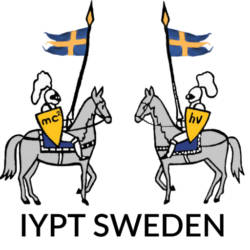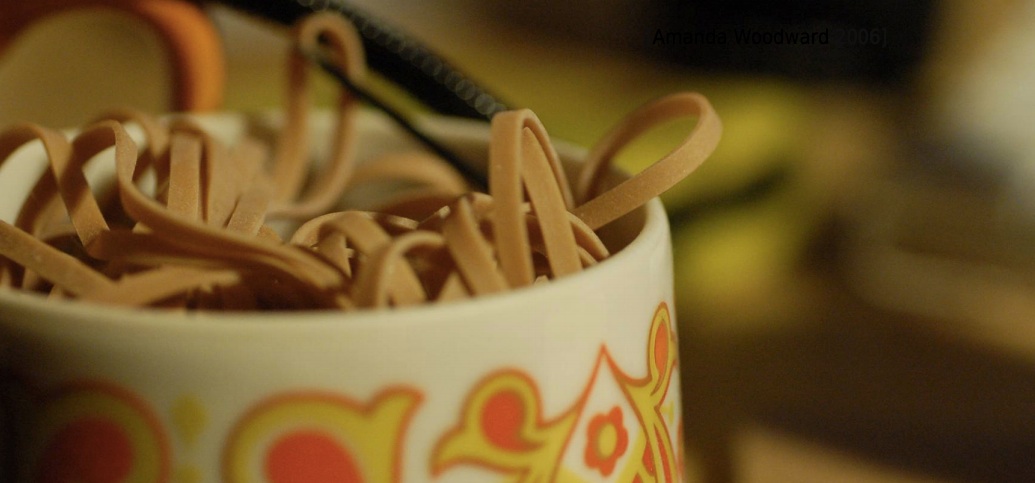As decided by the IOC 2013-08-01, released 2013-08-01
1. Invent yourself
It is known that some electrical circuits exhibit chaotic behaviour. Build a simple circuit with such a property, and investigate its behaviour.
2. Hologram
It is argued that a hologram can be hand made by scratching a piece of plastic. Produce such a ‘hologram’ with the letters ‘IYPT’ and investigate how it works.
3. Twisted rope
Hold a rope and twist one end of it. At some point the rope will form a helix or a loop. Investigate and explain the phenomenon.
4. Ball sound
When two hard steel balls, or similar, are brought gently into contact with each other, an unusual ‘chirping’ sound may be produced. Investigate and explain the nature of the sound.
5. Loaded hoop
Fasten a small weight to the inside of a hoop and set the hoop in motion by giving it an initial push. Investigate the hoop’s motion.
6. Bubble crystal
A large number of very small, similar air bubbles float on the surface of a soapy liquid. The bubbles will arrange themselves into a regular pattern similar to a crystalline lattice. Propose a method to obtain bubbles of a consistent size, and investigate the formation of such a bubble crystal.
7. Pot-in-pot refrigerator
The ‘pot-in-pot refrigerator’ is a device that keeps food cool using the principle of evaporative cooling. It consists of a pot placed inside a bigger pot with the space between them filled with a wet porous material, e.g. sand. How might one achieve the best cooling effect?
8. Freezing droplets
Place a water droplet on a plate cooled down to around -20 °C. As it freezes, the shape of the droplet may become cone-like with a sharp top. Investigate this effect.
9. Water bombs
Some students are ineffective in water balloon fights as the balloons they throw rebound without bursting. Investigate the motion, deformation, and rebound of a balloon filled with fluid. Under what circumstances does the balloon burst?
10. Coefficient of diffusion
Using a microscope, observe the Brownian motion of a particle of the order of micrometre in size. Investigate how the coefficient of diffusion depends on the size and shape of the particle.
11. Candle Power Plant
Design a device that converts the heat of a candle flame into electrical energy. Investigate how different aspects of the device affect its efficiency.
12. Cold balloon
As air escapes from an inflated rubber balloon, its surface becomes cooler to the touch. Investigate the parameters that affect this cooling. What is the temperature of various parts of the balloon as a function of relevant parameters?
13. Rotating saddle
A ball is placed in the middle of a rotating saddle. Investigate its dynamics and explain the conditions under which the ball does not fall off the saddle.
14. Rubber motor
A twisted rubber band stores energy and can be used to power a model aircraft for example. Investigate the properties of such an energy source and how its power output changes with time.
15. Oil stars
If a thick layer of a viscous fluid (e.g. silicone oil) is vibrated vertically in a circular reservoir, symmetrical standing waves can be observed. How many lines of symmetry are there in such wave patterns? Investigate and explain the shape and behaviour of the patterns.
16. Magnetic brakes
When a strong magnet falls down a non-ferromagnetic metal tube, it will experience a retarding force. Investigate the phenomenon.
17. Chocolate hysteresis
Chocolate appears to be a solid material at room temperature but melts when heated to around body temperature. When cooled down again, it often stays melted even at room temperature. Investigate the temperature range over which chocolate can exist in both melted and ‘solid’ states and its dependence on relevant parameters.
Authors: John Balcombe, Samuel Byland, Łukasz Gładczuk, Wee Wei Hsiung, Valery Koleboshin, Aliaksandr Mamoika, Ilya Martchenko, Othmar Marti, Martin Plesch, Rainer Reichle, Andrei Schetnikov, Erwin Handoko Tanin, Kathryn Zealand
Problem selection committee: John Balcombe, Samuel Byland, Ilya Martchenko
Epigraph selected by Evgeny Yunosov
References
Below, find a link to supporting materials concerning the problems.
These materials are provided by independent persons or organizations, for the benefit of everyone who is interested. If you want your material listed here, contact the Executive Committee.
The IYPT wants to stress that any information found on any of these sites shall in no way be considered binding and authoritative.
We kindly remind all readers that the IYPT guidelines clearly stand for standard scientific conduct and proper procedures for citing material that is not one’s own work, while the grading has a focus on the novelty and consistency of the original research results presented.
Source: iypt.org

